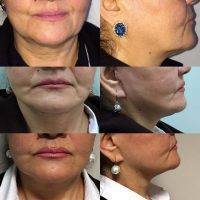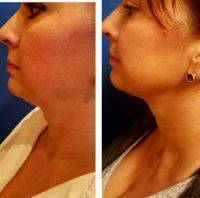Platysma SMAS Plication And MACS Facelift Longevity
A MACS lift stands for Minimal Access, Cranial Suspension. It was developed in Belgium and was first reported in 2002. It has been studied extensively. Similarly the PSP facelift, which stands for Platysma SMAS Plication has been in the plastic surgery literature for years and there are many 10 year studies looking at the efficacy of these techniques.
These are excellent facelifts and are similar to a deep plane facelift.
The one difference is that the MACS lift tends to use much shorter scars In general, all facelifts will last your lifetime but what we cannot say is how you will age after your lift.
If we take 5 years off when we do the procedure, you will benefit by looking 5 years younger for the rest of your life. (Brian Windle, MD, Kirkland Plastic Surgeon)
Longevity of Platysma SMAS Plication or MACS
Facelift result should recess the clock about 10 years after your surgery your aging will take normal course. (Jhonny Salomon, MD, Miami Plastic Surgeon)
Not all facelifts are the same, and the results of the procedure can certainly be enhanced by preoperative skin care, other procedures (such as fat grafting or resurfacing) performed at the time of facelift, and attentive postoperative care.
In an ideal patient, we expect the results of a facelift to last about 10 years. There is so much variability, however, that your question should be directed to your particular plastic surgeon!(Evan Ransom, MD, Bay Area Facial Plastic Surgeon)
The longevity of facial rejuvenation procedures depends upon a variety of factors. These include; the patients genetics, environmental exposures and the quality of the surgical craftsmanship. It’s important to remember that these procedures set the clock back, but never stop it from ticking.
The MACS and Platysma SMAS Plication are two options that are available for the treatment of facial aging. These procedures have been designed to address laxity of the underlying muscles and fascia in a minimally invasive manner.
They utilize suspension sutures to improve facial contour. These procedures result in moderate improvement in facial aging. Unfortunately, they are temporizing maneuvers and most patients eventually need a more aggressive procedure.
For many patients, minimally invasive surgery is an attractive alternative even when the results are not long term.
These procedures have greater longevity and higher long term satisfaction rates. (Richard J. Bruneteau, MD, Omaha Plastic Surgeon)
A minimal facelift will last a minimal amount of time. A good facelift with neck lift and SMAS elevation and transfer will last all of your life. You will always look about 10 years younger than others at your age.
That is, at 50 your will look 40 and at 60 you will look 50 and so on. (Paul Vitenas, Jr., MD, Houston Plastic Surgeon)
The Platysma SMAS Plication or MACS Facelift are mini facelifts. If the surgeon does not perform considerable work on the SMAS, the duration will be less than 5 years and sometime no more than a year or two.
If the surgeon performs considerable work on the SMAS, the results will be consistent with a traditional facelift. (Kris M. Reddy, MD, FACS, West Palm Beach Plastic Surgeon)
Complex lifts do not last longer than simpler procedures
I can tell you that after over 10 year’s experience and over 1000 cases operated we can safely state that the MACS-lift has a longevity comparable to any more invasive (read “more risky”) procedure such as deep plane facelifts, composite facelift, etc.
There has been a study on identical twins where one twin was treated with a “complex” technique and the other with a “minimally invasive” technique (comparable to the MACS). After 5 years absolutely no difference could be seen between the results of either technique.
The more complex techniques increase the risks and lengthen the recovery unnecessarily.
Many highly influential authors have moved from their own complex technique to a much more simple one for these reasons. (Alexis Verpaele, MD, Belgium Plastic Surgeon)
While it may be tempting to attempt to achieve excellent results with minimal work, this approach is often problematic, especially in plastic surgery. The types of facelift that you mention imply less rather than more manipulation of the facial structure.
It is in fact this manipulation that ensures the proper shape and proper form following facelift operations. While there are some patients who are excellent candidates for less invasive procedures because to have minimal problems, most patients benefit from an individualized approach to facial rejuvenation.
It is difficult to give you an answer to your question because not every minimally invasive surgery is like another surgeon’s version of the same procedure. In general however the old at age, “to get what you pay for”, holds true for plastic surgery as well.
In general, a mini facelift gives a mini result that lasts a mini length of time. You’d like to get at least 10 years out of an excellent facelift, but most minis won’t give more than 5 years. (Richard P. Rand, MD, FACS, Seattle Plastic Surgeon)
MACS facelifts results last depending upon degree of muscle and skin laxity
MACS lifts are shorter incision lifts with less skin elevation and less muscle tightening of the SMAS in the face. For droopier faces with excessive neck skin and more muscle weakening the results of a MACS lift is shorter lived.
No long term studies
Both of these types of facelifts have only been around very shortly in the last couple of years, and there are no long-term studies available at this point. There are many variables that going to the aging process such as smoking, sun exposure and genetics and the rate at which the aging process occurs, even after a facelift. (William Portuese, MD, Seattle Facial Plastic Surgeon)
Facelift results vary and difficult to generalize about longevity
Given patients age, anatomy, skin quality, and surgical techniques, it is nearly impossible to predict how long procedures will last. It’s also important to understand, and it may be obvious as the old saying goes: “we are turning back the hands of time but we are not stopping the clock from ticking” All facelifts age and they age differently.
What we want is enhanced skin elasticity; what we do is substitute for restoring the elasticity by pulling and cutting the skin. If you have a loose waistband, cutting out a segment of the band may keep them from slipping to your knees but it doesn’t restore the elasticity.
As you can tell from my colleagues comments, generally the more you do the more you get. Predicting the longevity of a face lift, is similar to predicting how your new house will settle after being built.
Never as long as you want them to!
Any procedure that attempts to fool gravity is bound to fail ultimately if you do not have realistic expectations. When a patient asks the question you do, they want the answer to tell them how long will they look just like they do soon after the facelift.
They often don’t take into account that you continue to age. Firstly, I answer the question to my patients with a simple “I don’t know!” All that I can say is that the visual clock turns back.
Also, if volume restoration is not addressed, results are suboptimal Facial rejuvenation surgery should address what you see as aging (skin sag and volume loss) and what you can’t see (bad skin quality).
I tell my patients that I will rejuvenate and repair their faces. Facelifts only rejuvenate your appearance. They don’t repair anything. Make sure your surgeon also address skin repair and volume restoration. (Manish H. Shah, MD, FACS, Denver Plastic Surgeon)
Facelifts set you back
Facelift surgery, by whatever method, merely sets you back in the aging process. You will continue to age at whatever your “aging rate” is. Your “aging rate” is dependent on many factors as noted by other respondents.
It is really hard to generalize, because each person’s tissues are different and facelifts are done differently, even if they have the same name. So I don’t know if this is very helpful, but it should last a long time. (George J. Beraka, MD (retired), Manhattan Plastic Surgeon)
Lasting Facelifts
Facelifts can last a lifetime. If you could compare a patient ten years or 20 years after a facelift to their unaltered self, you would still see some improvement from the facelift. While each facelift can show improvement for years, it really depends upon the individual skin quality, their age at the time of their facelift, genetics, sun exposure, smoking history, and diet. (Steven Wallach, MD, New York Plastic Surgeon)
Good facelifts last forever!
A good facelift works on the SMAS and platysma layer to renew the face. The correction of sagging is not permanent, however, the lift is similar to turning back the hands of a clock. When you stop turning, the clock continues to progress forward and eventually you will reach the time from when the turn was performed.
The same is true of a facelift, your age will be reversed but eventually you will look like you did before the facelift.The only catch is that it will be 5-15 years later. This is important because if you had nothing done, what would your appearance be in 5-15 years.
Obviously worse than if the procedure was done. Finally the time it takes for you to return to your pre-surgery look will depend on genetics, preventative maintenance, and the elasticity and health of your skin and underlying tissues. (Robert M. Freund, MD, New York Plastic Surgeon)
Facelifts turn back the clock
A MACS facelift is a very good procedure. There are many types of facelifts. Some good and some not so good. I shy away from traditional facelift surgery because I think it leaves patients looking pulled and surgical.
I want my patients to look natural. As for longevity, the MACS does well. I don’t think of how long the procedure will last. It isn’t going to unhook in ten years and fall down! These procedures turn back the clock (different amounts for different people).
Then, the clock starts ticking again. (Stephen J. Ronan, MD, FACS, San Francisco Plastic Surgeon)











